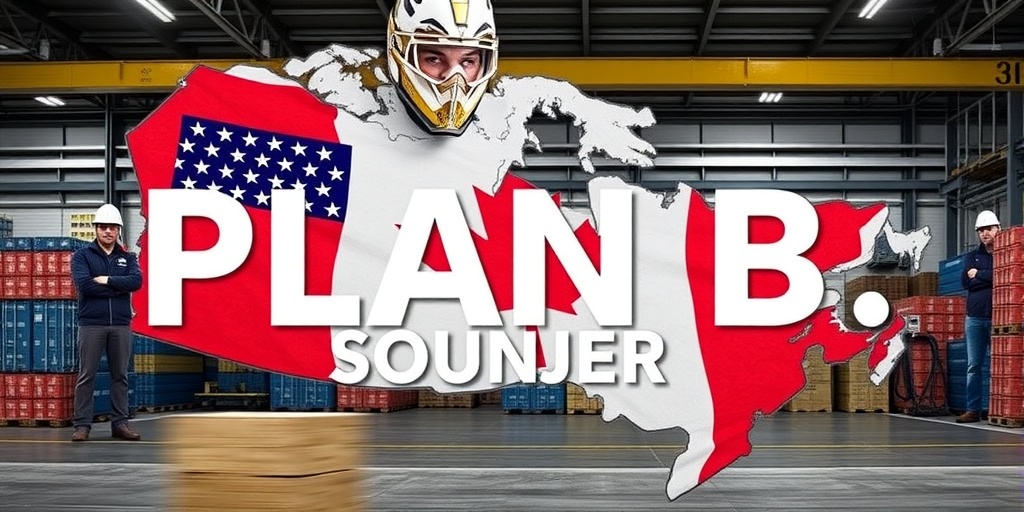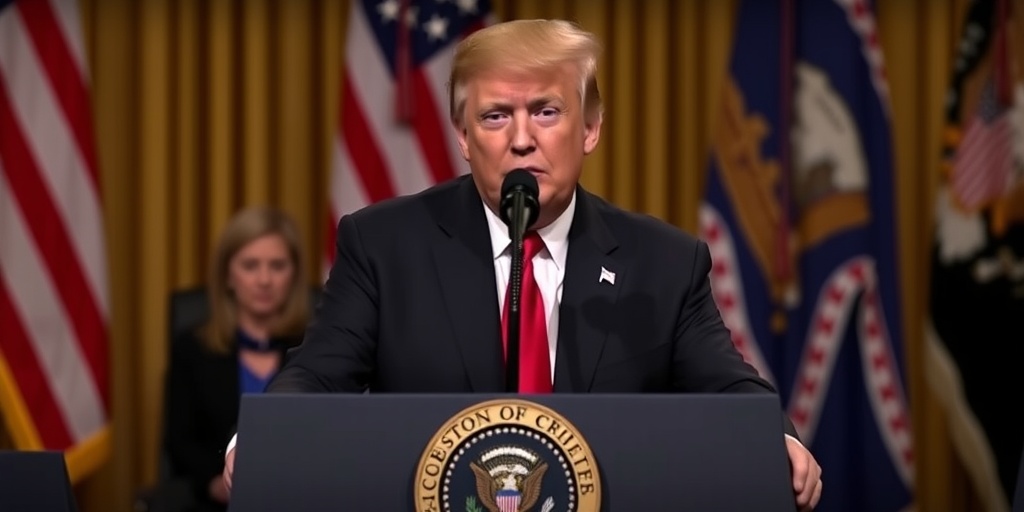Now Reading: Canada’s Plan B: Response to U.S. Tariffs
-
01
Canada’s Plan B: Response to U.S. Tariffs
Canada’s Plan B: Response to U.S. Tariffs

Title: Canada Braces for Potential Tariff Impact Following Trump’s Inauguration
As Donald J. Trump takes office as President of the United States, a crucial question looms over Canada: will he fulfill his campaign promises of enforcing steep tariffs on goods imported from Canada? The stakes are particularly high for border cities like Windsor, Ontario, which reports an estimated $300 million in daily trade with Detroit, Michigan—its U.S. counterpart. With this background, Canadians are anxiously awaiting Trump’s inaugural decisions and their potential repercussions on cross-border commerce.
Observers in Windsor, an automotive hub intertwined with its American neighbor, are keenly focused on how the Canadian government plans to respond to any American trade actions. Matina Stevis-Gridneff, the Canada bureau chief, has indicated that Canada’s strategy may resemble its previous actions during Trump’s first administration, particularly concerning the tariffs on steel and aluminum. Retaliatory measures are expected to target products manufactured in Republican-leaning or swing states, strategically aiming to inflict economic pressure on Trump’s political allies.
However, despite the intent behind such moves, experts warn that Canada, with its smaller economy, may not possess the capacity to strike back with equal force as the U.S. Government. The effectiveness of any retaliatory tariffs remains uncertain, leading to reflections on historical instances where trade tensions escalated into wars, notably the Smoot-Hawley Tariff Act of 1930.
During the early days of the Great Depression, the U.S. was embroiled in its own economic challenges and sought to protect domestic industries through drastic tariff increases. The average import duty surged to a staggering 59.1 percent, altering trade relationships, particularly with Canada, where exports of essential commodities like milk and cheese plummeted significantly.
Despite attempts by Canadian Prime Minister William Lyon Mackenzie King to mitigate the fallout—by restricting tariffs on only 16 products accounting for 30 percent of imports from the U.S.—Canadians still felt the repercussions of U.S. actions. The historical parallels between then and now are striking, with economists and historians still debating the Smoot-Hawley Act’s impact.
In the political arena, R.B. Bennett, the leader of the Conservative Party, capitalized on the trade tensions during the 1930 campaign, mocking King for not retaliating aggressively enough. Bennett’s pro-tariff rhetoric resonated with voters concerned about Canadian jobs, mirroring contemporary sentiments surrounding Trump’s tariff talks.
The aftermath of the 1930 election saw Bennett’s administration raise tariffs; however, the promised benefits failed to materialize, prompting a pivot towards expanding trade relations within the British Empire to counteract losses from the American market. Bennett’s efforts led to the establishment of trade agreements that provided some cushioning from the harsh realities of the Smoot-Hawley tariffs.
Fast forward to the present, with discussions underway regarding potential new strategies to bolster exports to non-American nations in response to anticipated U.S. tariffs. Yet, experts like Robert Bothwell, a historian at the University of Toronto, highlight that the current global economy and trade dynamics differ dramatically from the 1930s, complicating any straightforward attempts at replicating historic solutions.
Bothwell also emphasized the lack of a robust alternative market, stating, “We don’t have an obvious alternative. I don’t see us having a way to absorb the same amount of exports as we did in the ‘30s.” This presents a daunting challenge for the Canadian economy, especially given its historical reliance on U.S. trade.
As Canada prepares for possible shifts in trade dynamics under Trump’s administration, leaders like Prime Minister Justin Trudeau are contemplating effective strategies to navigate these turbulent waters. The immediate future holds uncertainty, but one thing remains clear: Canadian stakeholders—ranging from politicians to individual workers—are increasingly focused on the implications of U.S. economic policies, and as Trump’s tariffs loom, a careful eye will remain on both sides of the border.
With the ongoing political discourse and a globally interconnected market, Canada’s response to any potential tariffs will be pivotal in shaping not just the economic landscape but also diplomatic relations between these neighboring countries. As Windsor and other border communities brace for impact, the events of the coming days will undoubtedly be watched closely, signaling a new chapter in U.S.-Canada trade relations.
Stay Informed With the Latest & Most Important News
Previous Post
Next Post
-
 01New technology breakthrough has everyone talking right now
01New technology breakthrough has everyone talking right now -
 02Unbelievable life hack everyone needs to try today
02Unbelievable life hack everyone needs to try today -
 03Fascinating discovery found buried deep beneath the ocean
03Fascinating discovery found buried deep beneath the ocean -
 04Man invents genius device that solves everyday problems
04Man invents genius device that solves everyday problems -
 05Shocking discovery that changes what we know forever
05Shocking discovery that changes what we know forever -
 06Internet goes wild over celebrity’s unexpected fashion choice
06Internet goes wild over celebrity’s unexpected fashion choice -
 07Rare animal sighting stuns scientists and wildlife lovers
07Rare animal sighting stuns scientists and wildlife lovers





















